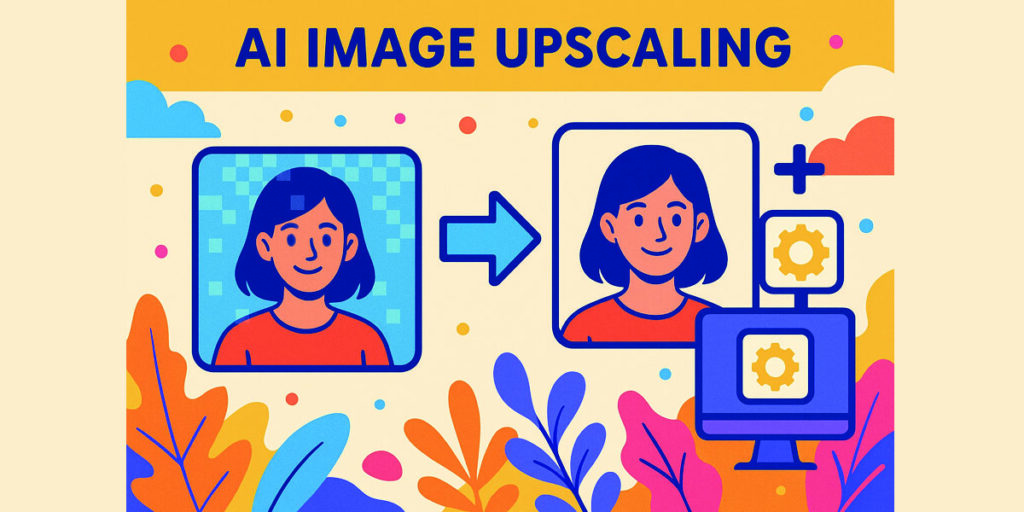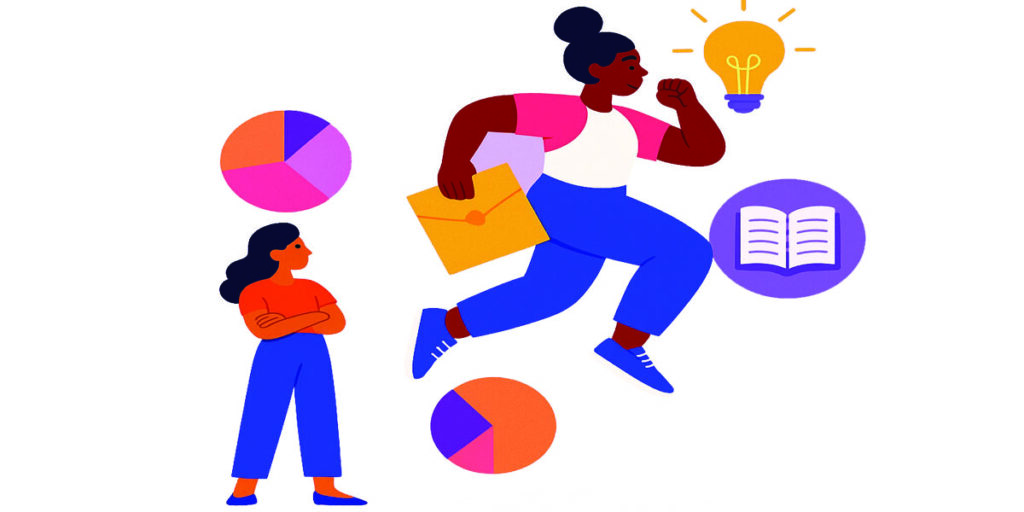AI image upscaling and clarity booster for low-quality images.
With visual content now central to our digital lives, image quality is paramount. From smartphone snapshots to professional online portfolios, clarity and detail are vital for impactful engagement. Low-quality images, frequently marred by blur, noise, and poor resolution, can significantly diminish their intended effect. Consequently, AI-powered image enhancement tools have become powerful solutions, and HitPaw Photo Enhancer has emerged as a key player in this rapidly growing market. This article will explore the history of image enhancement, analyze the economic forces fueling the demand for such tools, and examine the networking effects and broader implications of HitPaw Photo Enhancer in the digital sphere.
A Historical Perspective on Image Enhancement:
The desire to improve the quality of images is not a recent phenomenon. Long before the advent of artificial intelligence, various techniques were employed to enhance photographs and artwork.
- Early Analog Techniques: In the early days of photography, enhancement often involved manual processes during development and printing. Techniques like dodging and burning were used in the darkroom to adjust exposure levels in specific areas of the image, thereby enhancing contrast and detail. Retouching, a meticulous process involving physical manipulation of the negative or print, aimed to remove imperfections and improve overall aesthetics. These methods were time-consuming, required significant skill, and were limited in their ability to address fundamental issues like blur or low resolution.
- The Dawn of Digital Image Processing: The digital revolution brought about a paradigm shift in image manipulation. Early software programs introduced basic tools for adjusting brightness, contrast, and color balance. Filters were developed to apply stylistic effects and rudimentary sharpening. While these tools offered greater flexibility and ease of use compared to analog methods, they still relied on predefined algorithms and lacked the sophisticated understanding of image content that AI now provides. Techniques like bicubic interpolation were used for image resizing, but often resulted in a noticeable loss of sharpness and the introduction of artifacts when scaling up significantly.
- The Rise of Computational Photography: The late 20th and early 21st centuries witnessed the emergence of computational photography, which leveraged algorithms to capture and process images in novel ways. Techniques like High Dynamic Range (HDR) imaging, panorama stitching, and noise reduction algorithms built into digital cameras represented significant advancements. However, these methods primarily focused on improving image capture or addressing specific types of degradation, rather than the intelligent upscaling and general clarity enhancement offered by modern AI tools.
- The AI Revolution in Image Enhancement: The advent of deep learning and convolutional neural networks (CNNs) has revolutionized the field of image enhancement. AI algorithms can be trained on vast datasets of high-quality and low-quality image pairs, learning complex patterns and relationships between them. This allows AI-powered tools to go beyond simple pixel manipulation and intelligently reconstruct missing details, remove complex noise patterns, and upscale images with remarkable fidelity. HitPaw Photo Enhancer is a direct beneficiary of these advancements, utilizing sophisticated AI models to achieve its impressive results.
The Economic Market for AI Image Upscaling and Clarity Boosters:
The increasing demand for high-quality visual content across various sectors has fueled a robust economic market for AI image upscaling and clarity boosting tools like HitPaw Photo Enhancer. Several key factors contribute to this growth:
- The Proliferation of Digital Media: The internet, social media platforms, e-commerce websites, and digital advertising rely heavily on visual content. High-quality images are crucial for attracting attention, conveying information effectively, and building brand credibility. As the volume of digital media continues to explode, the need for tools to enhance and optimize images becomes increasingly critical.
- The Rise of Mobile Photography: While smartphone cameras have become incredibly advanced, images captured on older devices or under challenging lighting conditions often suffer from low resolution, noise, and blur. Tools like HitPaw Photo Enhancer provide a convenient way for mobile users to improve the quality of their personal photos and share them with confidence.
- The Demands of E-commerce: In the online retail space, product images are a key driver of purchasing decisions. High-resolution, clear images that showcase product details effectively are essential for attracting customers and increasing sales. AI image upscaling can help e-commerce businesses enhance their existing product photos, making them more visually appealing and professional.
- The Needs of Content Creators: Professional photographers, graphic designers, and social media influencers rely on high-quality visuals for their work. AI image enhancement tools can streamline their workflows by quickly improving the quality of their images, saving time and effort in post-processing.
- The Growing Importance of Visual Storytelling: Across various industries, from marketing and journalism to education and entertainment, visual storytelling has become a powerful tool for communication. Clear and engaging images play a crucial role in conveying narratives effectively. AI enhancement tools can help ensure that the visual elements of these stories are impactful and professional.
- The Accessibility of AI Technology: The increasing availability and affordability of AI-powered software have made sophisticated image enhancement accessible to a wider audience, including individuals and small businesses that may not have the resources for traditional professional photo editing services.
Market Segmentation and Competition:
The market for AI image enhancement tools can be broadly segmented based on user needs and technical capabilities:
- Consumer-grade applications: These are typically user-friendly tools designed for individuals to enhance their personal photos quickly and easily. HitPaw Photo Enhancer caters to this segment with its intuitive interface and one-click enhancement features.
- Professional-grade software: These are more advanced tools with a wider range of features and customization options, often used by professional photographers and designers. While HitPaw offers powerful AI capabilities, professional software might offer more granular control over specific parameters.
- API and cloud-based services: These solutions allow developers to integrate AI image enhancement capabilities into their own applications and workflows.
The competitive landscape includes various players, ranging from established software companies incorporating AI features into their existing photo editing suites to newer companies specializing in AI-powered image enhancement. HitPaw Photo Enhancer differentiates itself through its focus on ease of use, powerful AI algorithms, and support for various image enhancement tasks, including upscaling, denoising, and face enhancement.
Networking Effects and Implications:
HitPaw Photo Enhancer, like many digital tools, benefits from and contributes to various networking effects in the digital ecosystem:
- Increased User Adoption and Awareness: As more users discover and experience the benefits of HitPaw Photo Enhancer, positive word-of-mouth and online reviews can lead to increased adoption. This creates a stronger network effect, making the tool more visible and attracting even more users. The sharing of enhanced images on social media platforms also acts as organic marketing, further expanding its reach.
- Data-Driven Improvement of AI Models: The effectiveness of AI-powered image enhancement relies heavily on the quality and quantity of training data. As more users process images through HitPaw Photo Enhancer, the anonymized data can potentially be used to further refine and improve the underlying AI models, leading to even better results over time. This creates a positive feedback loop where increased usage leads to enhanced performance, which in turn attracts more users.
- Integration with Other Platforms and Workflows: The ability of HitPaw Photo Enhancer to seamlessly integrate with other platforms and workflows can significantly enhance its value proposition. For example, easy export options to social media, cloud storage services, and other photo editing software can streamline the user experience and foster greater adoption within existing digital ecosystems.
- Community Building and Knowledge Sharing: Online communities and forums dedicated to image editing and AI tools can play a role in the success of HitPaw Photo Enhancer. Users can share tips, showcase their results, and provide feedback, creating a supportive ecosystem around the software. This can lead to increased user engagement and loyalty.
- Impact on Content Consumption and Creation: Tools like HitPaw Photo Enhancer contribute to a broader trend of increasing the visual quality of online content. This can have both positive and negative implications. On the positive side, clearer and more detailed images can enhance communication, improve aesthetics, and provide a more immersive user experience. On the negative side, the ease of enhancing images can potentially contribute to the spread of manipulated or misleading visuals, raising ethical considerations about authenticity and transparency.
Future Trends and Opportunities:
The market for AI image upscaling and clarity boosters is expected to continue its rapid growth, driven by ongoing advancements in AI technology and the ever-increasing demand for high-quality visual content. Some key future trends and opportunities include:
- More Sophisticated AI Models: Future AI models will likely become even more adept at understanding image content and generating realistic details during upscaling and enhancement. This could lead to even more impressive results, blurring the lines between artificially enhanced and originally high-quality images.
- Real-time Image and Video Enhancement: As AI processing power increases, we may see more real-time image and video enhancement capabilities integrated into devices and applications. This could have significant implications for video conferencing, live streaming, and augmented reality experiences.
- Personalized Image Enhancement: Future AI tools might be able to learn individual user preferences and automatically enhance images according to their specific tastes. This could involve adjusting color palettes, adding stylistic elements, or focusing on specific aspects of the image.
- Integration with Hardware: We may see closer integration of AI image enhancement capabilities directly into camera hardware, allowing for improved image quality at the point of capture.
- Addressing Ethical Concerns: As AI image enhancement becomes more powerful, addressing ethical concerns related to image manipulation and authenticity will become increasingly important. This may involve the development of tools and standards for detecting and labeling AI-enhanced images.
HitPaw Photo Enhancer occupies a significant position within the dynamic and expanding market for AI image upscaling and clarity boosters. Its history is rooted in the long-standing human desire to improve visual quality, evolving from manual analog techniques to sophisticated AI-powered algorithms. The economic market for such tools is driven by the ever-increasing demand for high-quality visual content across various digital platforms and industries. Furthermore, HitPaw benefits from and contributes to networking effects by increasing user adoption, potentially improving AI models through data, integrating with existing workflows, and fostering community engagement. As AI technology continues to advance, tools like HitPaw Photo Enhancer are poised to play an even more crucial role in shaping the future of digital imaging, offering powerful solutions for enhancing visual content and navigating the increasingly visual world around us. However, this power also necessitates careful consideration of the ethical implications associated with image manipulation and the importance of maintaining authenticity in the digital age.




















